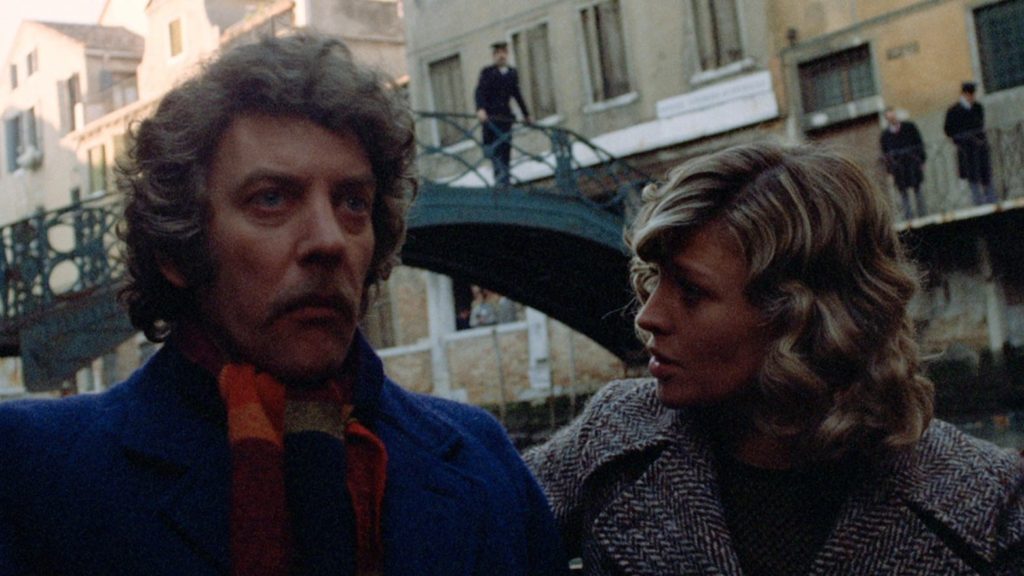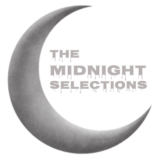Don't Look Now
1973

Rated: R
Genre: Drama, Thriller, Horror
Country: U.K.
Run-Time: 1h 50min
Director: Nicolas Roeg
Cast
Donald Sutherland……….John Baxter
Julie Christie……………………..Laura Baxter
Hilary Mason…………………….Heather
Clelia Matania……………….Wendy
It is always interesting when a maverick filmmaker ventures into horror. Think Stanley Kubrick’s The Shining, or Micheal Haneke’s Funny Games, or even Clair Denis’s Trouble Every Day. The end result is usually something unique, intelligent and subversive. The same is true of Nicolas Roeg’s 1973 classic Don’t Look Now, a film that takes an entirely original approach in dealing with the supernatural.
For those who don’t know, Nicolas Roeg was a British director who had an impressively diverse run of films in the 70s, including Performance, Walkabout, The Man Who Fell from Earth and Bad Timing: A Sensual Obsession. Although Roeg enjoyed collaborating on splashy creative endeavours with rock stars such as Mick Jagger, David Bowie, Roger Waters and Art Garfukel, Don’t Look Now is one of his more subtle affairs. It is also his only real attempt at horror.
Roeg’s style is often noted for containing a certain level of eroticism and Don’t Look Back is no exception. Before release, the film spent a good deal of time going back and forth with British censors because of its, at the time, notorious depiction of Donald Sutherland going down on Julie Christie. It dared to ask the question, is oral sex censor-worthy? Turns out, yes…and no. In Britain the scene would be cut from the R-rated film, but an uncut X-rated version was also allowed to be released simultaneously. (For years, accusations that Donald Sutherland had unsimulated sex with Julie Christie when filming the sex sequence circulated, and this continued even after the rumours were denied by many of the people involved.)
Unfortunately, the sex scene controversy has detracted from an unparallel horror thriller experience. More than fifty years later, Roeg’s film still stands out as one of the best.
In Don’t Look Now, John (Donald Sutherland) and Laura (Julie Christie) are two parents grieving after their young daughter, Christine, drowned at their residence in English. It is a beginning that has similarities to Lars von Trier’s Antichrist and pairing the two films might make for an interesting, though weighty, double feature.
Some time after Christine’s death, John takes a job restoring an old church in Venice. Laura, looking for a change of scenery, comes with him. One day, while the couple is having dinner at a restaurant, Laura has an odd encounter with two elderly sisters, one of which blurts out that she is talking to Laura’s daughter and that she is “happy as can be”. (Of course the other sister lets Laura know her sister is psychic.) This causes Laura to go back to her table and faint.
When Laura wakes up in the hospital, she is determined to see the psychic again, but John is skeptical of the sisters. What is true?
And what is John to make of his own sighting of a girl running around Venice in the same cherry red raincoat his daughter died wearing?
Don’t Look Now plays out like a drama exploring how grief affects individuals differently, but there is always a strong sense of dreadful foreboding foreshadowed in its imagery. The tone set makes us anxious…but anxious of what? The mystery keeps changing. Roeg structures the film to be like a puzzle where all the pieces have been dumped on the table, but none of us can make out what the final image is until the last piece is in place. In that last piece we finally understand the tragic horror that has unfolded and are we left with is something far more meaningful than a Shyamalan-type twist
Donald Sutherland deserves a ton credit for his performance as well. Sutherland does not make John always likable, but he still comes across as relatable. John feels like a real, complex person, filled with very human contradictions. On the surface, John seems to handle Christine’s death better than Laura, but he uses his work as a way of avoiding his grief. There is also irony in the fact that John is not a religious man, but his occupation has him constantly working in a church. If he wanted to, he could easily turn to one of the priests to help overcome his loss, yet he still carries his burden mostly alone. He is a man who struggles with his own lack of faith and is ultimately waiting to be taken down by hubris.
As a director, Roeg makes fantastic use of Venice as a location as well. The cinematography of Venice throughout the day is gorgeous. But during the night scenes, Roeg transforms the city into a chaotic labyrinth of shadow. It is a marvel.
Admittedly, the 1973 release of The Exorcist likely blunted Don’t Look Now’s impact on horror, but a number of directors still cite it as a major influence on their own work. Alfred Sole said he used raincoats- though yellow- in his killer kid classic Alice, Sweet Alice as a homage to Don’t Look Now. Danny Boyle has called Roeg’s work one of his favorite movies. David Cronenberg has called Don’t Look Now the most frightening thing he has ever seen. And even Ari Aster said he drew inspiration from its cryptic, eerie tone when making Hereditary.
Although Don’t Look Now became notorious for its graphic sex, it also is one of the most sophisticated adult horrors ever made. There is no denying Don’t Look Now’s originality, both in concept and execution. While so many supernatural horrors would have us ponder the existence of ghosts, Roeg uses supernatural elements to get people to contemplate the mystery of God. It’s a truly ambitious and unique approach to horror, and one that has never been copied.
Put plainly, Don’t Look Now is must-see material for anyone who appreciates a good slow burn thriller that keeps you thinking long after the credits roll.
